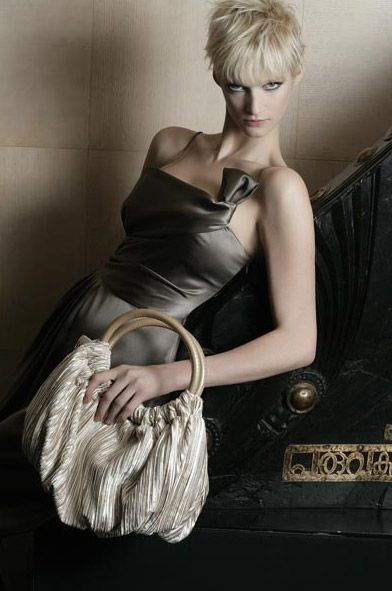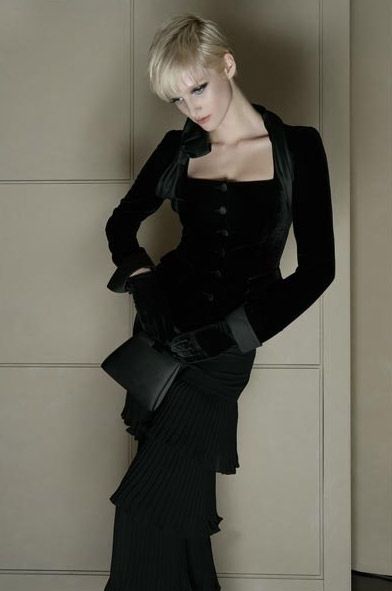By Michelle Spencer
When Giorgio Armani appeared on the cover of Time magazine on 5 April 1982, he was the first fashion designer to do so since Christian Dior, back in 1957. A huge influence on most contemporary menswear designers, Armani revolutionized corporate dress for both men and women during in the second half of the twentieth century.
Questioning the function of men's designer clothing in the contemporary world when he launched his first menswear line in 1974, Armani developed a new style based on an understated casual lifestyle. He deconstructed, re-cut, reshaped and re-proportioned the male suit using softer, more languid fabrics, eliminating any superfluous details.
His men's clothing suits have become the ultimate symbol of sensuality coupled with confidence, rather than power.
When he launched his womens wear line in 1975, Armani anticipated the second wave of the women's liberation movement, which culminated in the 1980s. He designed a masculine look for women creating daytime clothes that were renowned for their cut, simplicity and use of luxurious fabrics.
He combined masculine cutting techniques with languid, soft, feminine fabrics, and invented the new power suit' for women. He Changed the shape of the armhole, simplified the finishing details and used fabrics made up of seven or eight different colored threads in the weave, to create a soft, muted color that was hard to define.

Dubbed 'Mr Hollywood', Armani created the androgynous look for women when Diane Keaton wore his clothes in the film, Annie Hall (1977). He reinvented the idea of celebrity dressing and achieved worldwide fame by dressing Richard Gere in the 1980 film American Gigolo. The list of Hollywood stars that currently wear Armani almost exclusively include Tom Cruise, George Clooney, Martin Scorsese, Jodie Foster and Cate Blanchett, among others.

Armani's evening wear for women is known for its exquisite beading, diaphanous materials and pattern layering, underlining his reputation for style, sophistication and glamour.
Like Pierre Cardin, Armani was a pioneer in the launch of cheaper diffusion lines - 'Mani' and Le Collezione, Emporio Armani, Armani Jeans and A/X Armani Express. He expanded his business empire in 2000 with the launch of Armani Casa Homewares, a cosmetics line and a new haute couture range called Armani Prive, which predominantly consisted of red carpet evening wear. The Guggenheim Museum in New York launched a retrospective exhibition of Armani's work in October 2000, which traveled the world.